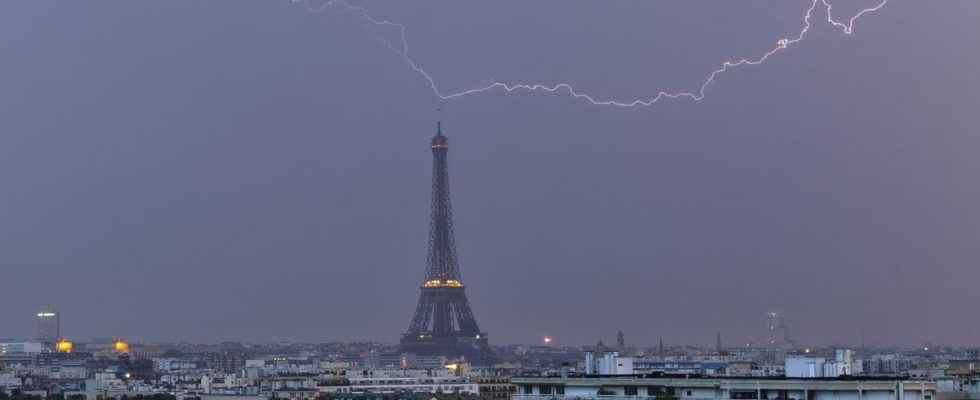It will thunder, and it will cough. After a weekend dotted with numerous stormy episodes, thirteen departments ranging from Centre-Val-de-Loire to Burgundy, Champagne and Lorraine, remained on orange alert Monday evening for thunderstorms that could be violent, locally accompanied by hail and strong gusts of wind up to 80/90 km/h, even very locally 100 km/h. Unstable weather still on the program this Tuesday, with a new stormy deterioration that will affect a large part of the country, forecasts Météo-France.
A concomitant phenomenon to the storms this weekend, an increase in emergency room visits for respiratory distress has been observed. Many patients were treated for severe asthma attacks, directly related to the weather. They were taken from what is called “storm asthma”. Kezako? 20 minutes explains to you.
Pollen bombs
On the website of National network for monitoring aerobiological risks (RNSA), the latest allergy risk map in France is mostly adorned with red. “The risk of allergy will be medium to high for grass pollens which remain present throughout France to bother allergy sufferers in favor of hot and sunny weather”. Nothing unusual in this summer period.
“What is problematic, however, is that we are in a long period loaded with pollen, without respite since the arrival of birch pollen in December, underlines Isabella Annesi-Maesano, director of research at Inserm and epidemiologist of allergic and respiratory diseases. To draw a parallel with another meteorological phenomenon – water bombs, we are subjected to pollen bombs, which are present over a long period and in large quantities. The combination of this phenomenon with this special weather, marked by intense heat and stormy episodes, gives rise to the risk of thunderstorm asthma”.
The storm before the calm
“It is possible that allergy sufferers would be bothered at the start of certain heavy thunderstorms because the concentration of pollen would increase rapidly near the ground with the strong downdraft winds which bring grass pollen from the upper air layers to the air layers near the ground. ground, confirms the RNSA. Then, the many storms that will cross the country will be accompanied by heavy showers of rain that will give a little respite to allergy sufferers by flattening the pollen on the ground”. But before savoring the return to calm, allergy sufferers may first suffer from the stormy wind that precedes the storm. In practice, “before it rains, the beginning of a stormy episode is manifested by strong gusts, explains Isabella Annesi-Maesano. The air pressure changes, whirlpools form, and the wind, which intensifies, will stir up the pollen which, with the high humidity in the air, will become waterlogged”.
But by what mechanisms can the storm make the pollens more virulent? “The pollen bombs fragment: by gorging themselves with water, the pollen explodes, the outer membrane of the pollen grain – the exine – opens and releases submicron particles containing more allergens, details the epidemiologist. Then everything falls back. However, unlike conventional pollens which stop at the level of the nose, affect the nasal mucosa and give rise to rhinitis, or hay fever, in the event of allergic terrain, if they are inhaled, these submicron particles penetrate deeply into the bronchial tree and can trigger a very virulent thunderstorm asthma attack”.
“It must be scary”
And “if many seem to discover this phenomenon, storm asthma is not a new phenomenon: it has been described by other countries for twenty years, especially in the United Kingdom or Italy, adds Isabella Annesi -Maesano. And at the end of 2016, during the austral spring, there was an episode of massive thunderstorm asthma in Melbourne, Australia, during which 9,000 people went to the emergency room, and 9 lost their lives. This weekend, especially in Ile-de-France, we observed at the same time as the violent storms a peak in emergency rooms for cases of respiratory distress ”.
And “if until now, these stormy asthma attacks affected people with allergic conditions, the novelty we are seeing in France is that it now also affects people with well-controlled asthma, followed by a doctor and under treatment, worries the epidemiologist. We see asthmatic but not allergic patients who, due to the excess of pollen and submicron particles due to the storm, have had an attack. The body can no longer manage. However, when we know that stormy episodes increase with global warming, this must be scary”.

